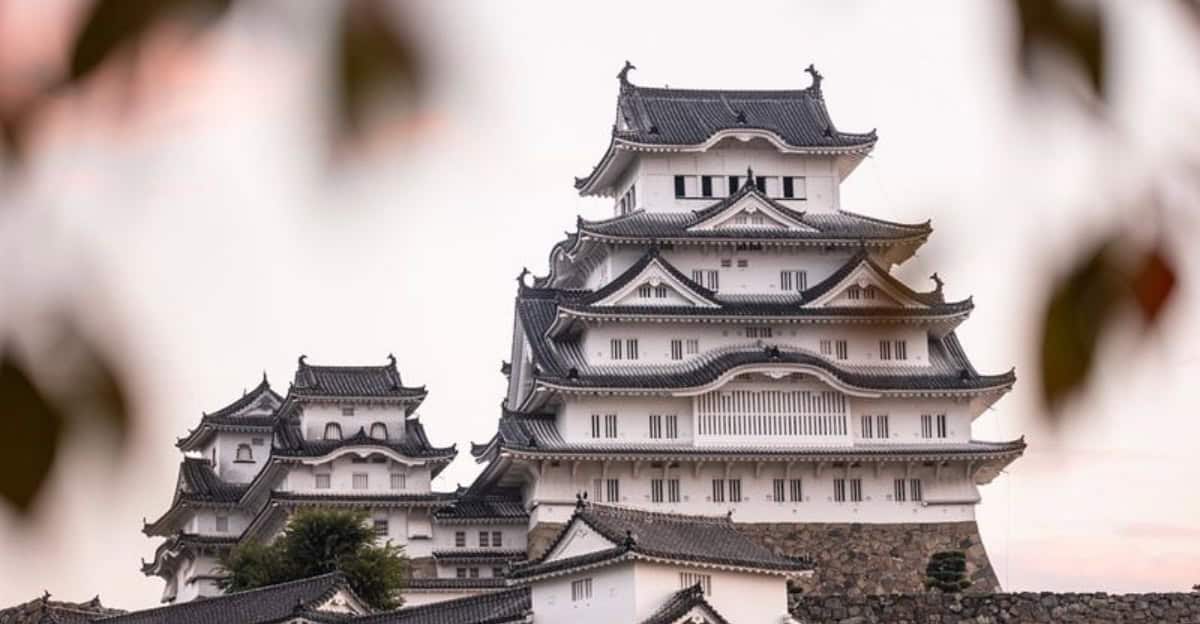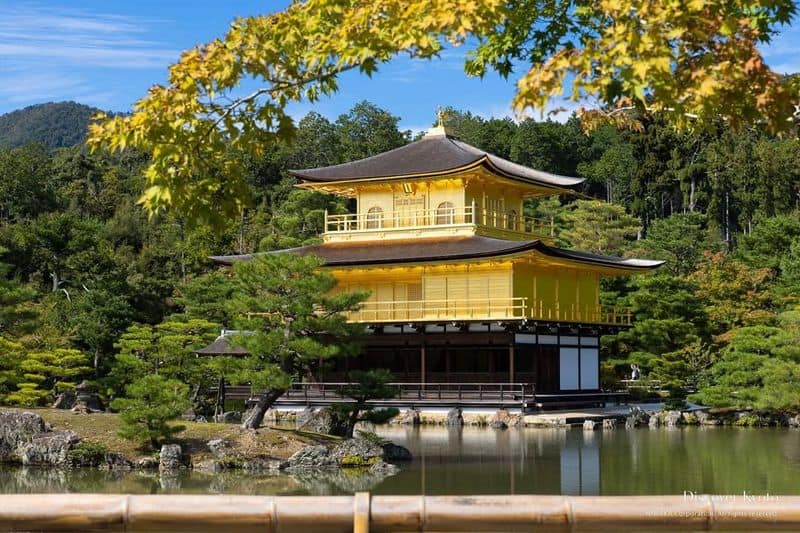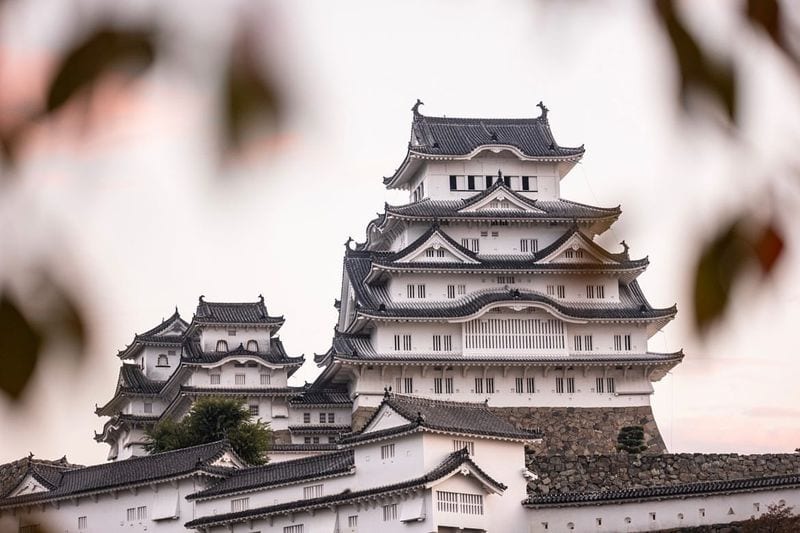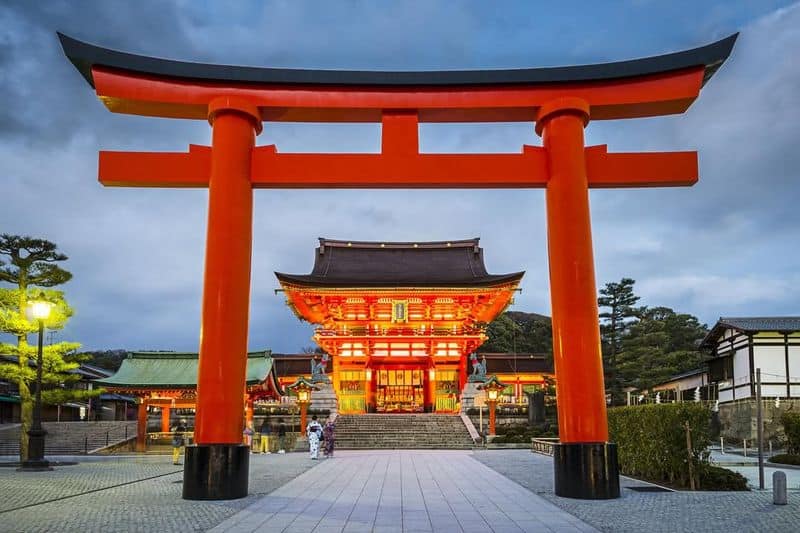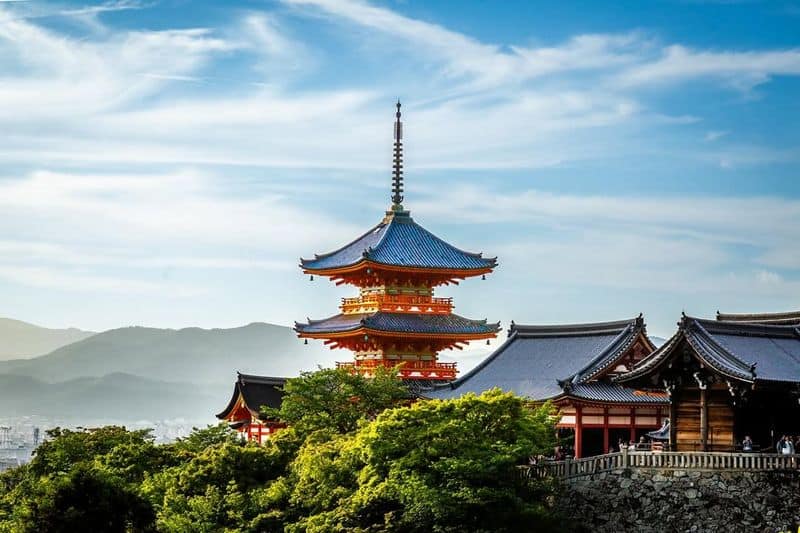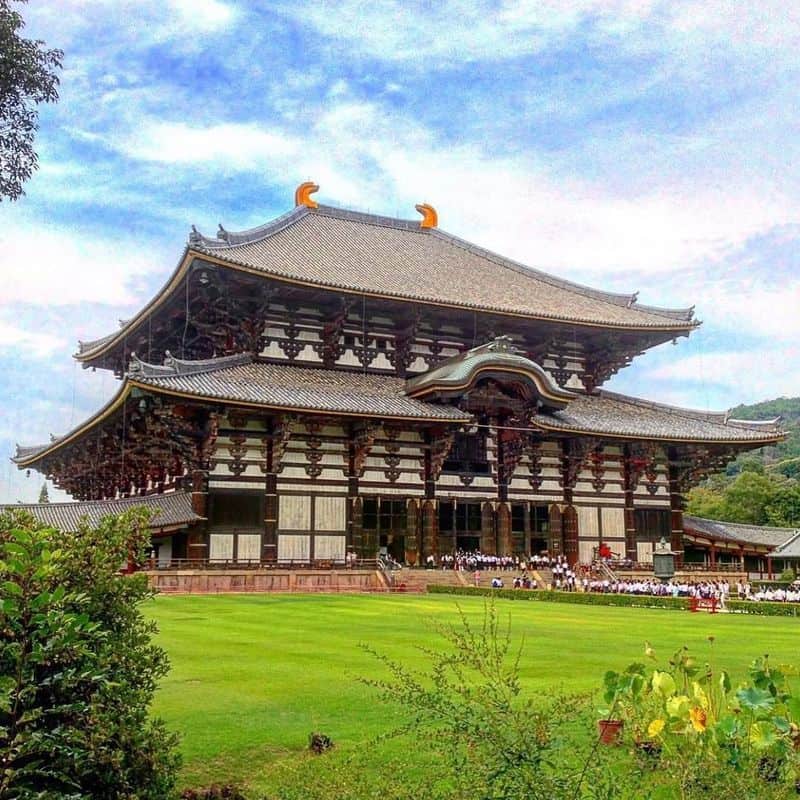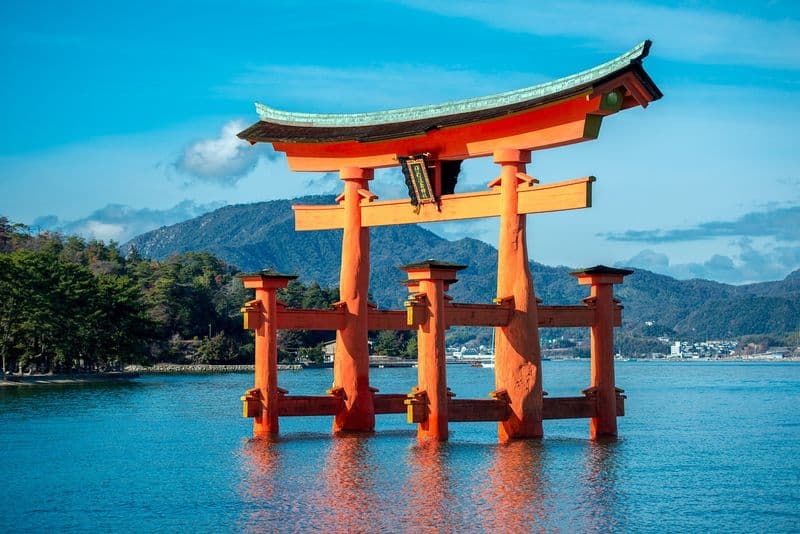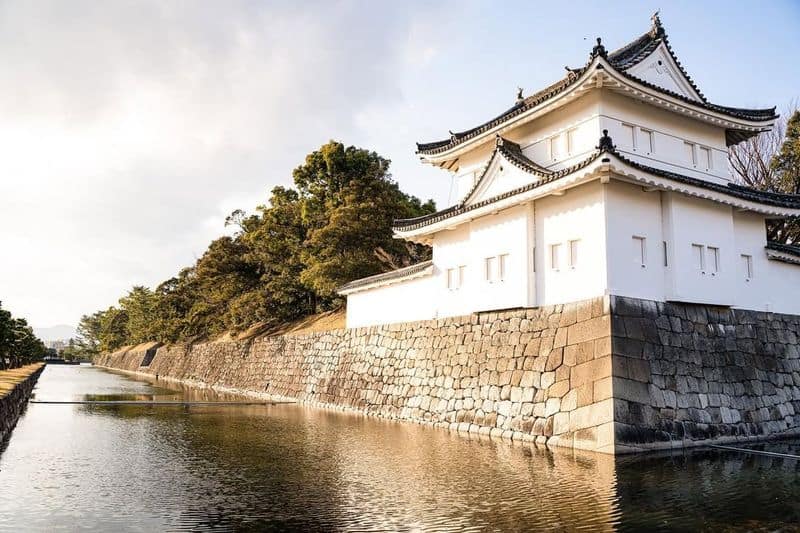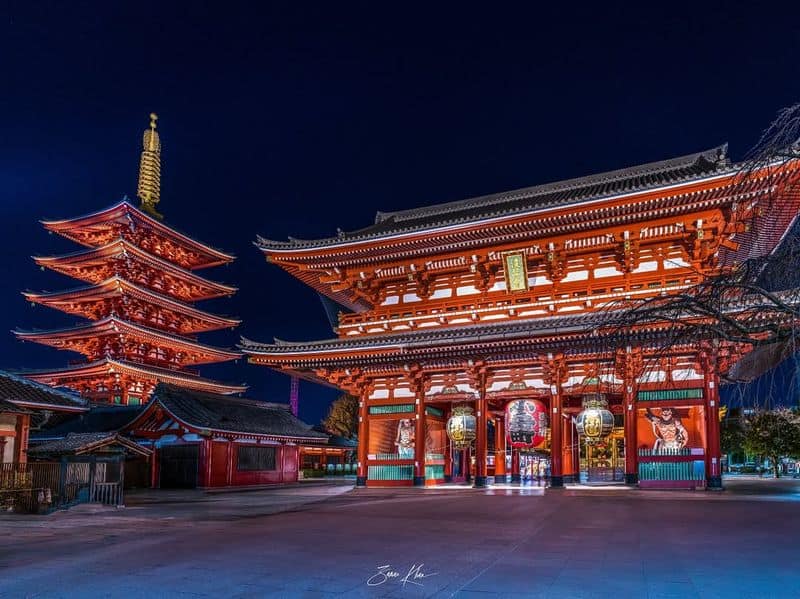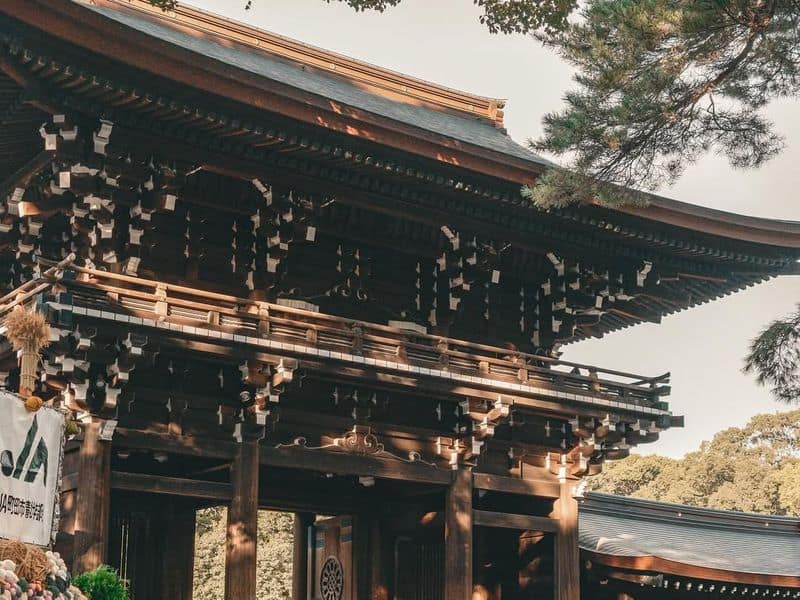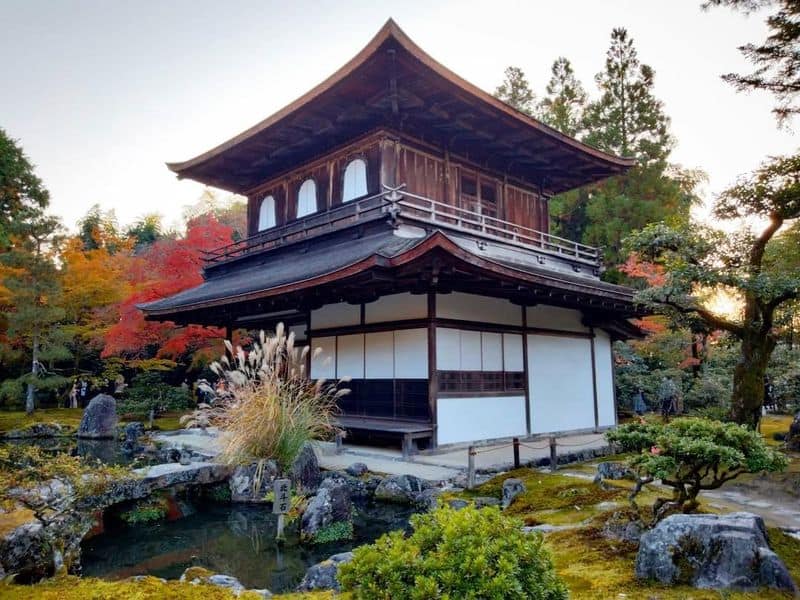Japan’s architectural history is rich and diverse, with buildings that capture the essence of its culture, traditions, and aesthetic ideals.
From serene temples to majestic castles, these structures not only offer a glimpse into Japan’s past but also continue to inspire architects worldwide.
Let’s explore 10 of these stunning traditional buildings, each with its own unique charm and historical significance, all wrapped up with a sprinkle of humor.
1. Kinkaku-ji (Golden Pavilion), Kyoto
Oh, Kinkaku-ji! As if dipped in the sun’s glow, this golden temple is a beacon of tranquility in Kyoto.
Imagine a duck, floating lazily in the mirror-like pond that cradles the pavilion, probably pondering deep thoughts or just the next bread crumb.
This Zen Buddhist temple, with its gleaming gold leaf exterior, offers peace, but with a hint of opulence. Don’t forget to bring sunglasses; it shines bright enough to be visible from space!
And if you’re really lucky, you’ll spot a turtle nodding in approval. It’s like a postcard come to life!
2. Himeji Castle, Himeji
Himeji Castle, or as we like to call it, the White Heron Castle, could very well moonlight as a fairy tale fortress.
It’s not just its elegant white facade that awes visitors; it’s the clever design that baffles even the most strategic minds. Imagine a ninja trying to navigate through its maze-like corridors – good luck!
Picture the pink cherry blossoms in full bloom, framing this ancient masterpiece as if nature is applauding its beauty.
Pro tip: bring a camera, because your phone’s memory will fill up faster than you can say “samurai.”
3. Fushimi Inari Taisha, Kyoto
Fushimi Inari Taisha is a labyrinth of vermilion torii gates that might inspire you to take up running – or at least speed walking.
Dedicated to Inari, the Shinto god of rice, this shrine is known for its seemingly endless tunnels of gates, each donated by a business or individual hoping for prosperity.
As you wander, you may wonder if you’ve stumbled into a fox’s dreamscape, given Inari’s fox messengers.
The soft crunch of gravel underfoot and the gentle rustle of leaves set the perfect backdrop for a serene yet colorful adventure.
4. Kiyomizu-dera, Kyoto
Kiyomizu-dera, perched gracefully on the hills of Kyoto, is an architectural feat that seems to defy gravity.
Built without a single nail, it relies on the strength of its wooden beams – a fact that might make you hold your breath as you step onto its famous balcony.
The panoramic views of Kyoto from here are as breathtaking as the temple itself. Cherry blossoms add a touch of pink to this majestic wooden wonderland.
Just be sure you don’t make any sudden moves; you wouldn’t want to test its nail-free design!
5. Tōdai-ji (Great Eastern Temple), Nara
Tōdai-ji, home to the Great Buddha of Nara, is a temple that can make you feel both small and inspired.
This colossal wooden structure is not only a marvel in itself, but it also houses the largest bronze Buddha statue in Japan. But wait, there’s more!
Outside, deer roam freely, adding a whimsical touch to the sacred atmosphere. Legend has it, these deer are messengers of the gods.
Just remember, they might be after your snacks as much as your spiritual enlightenment. Keep your eyes peeled for antlered ambushers!
6. Itsukushima Shrine, Miyajima
Famous for its “floating” torii gate, Itsukushima Shrine is a sight that seems plucked from a legend.
Located on Miyajima Island, this UNESCO World Heritage Site appears to rise from the sea during high tide.
During low tide, you can walk right up to the gate, feeling like a part of history with each step on the exposed seabed.
The Shinto shrine itself is a serene complex blending harmoniously with the natural beauty of its surroundings. Just be cautious of curious deer, who may greet you upon arrival!
7. Nijō Castle, Kyoto
With its “nightingale floors” that sing underfoot, Nijō Castle is an auditory adventure in Kyoto.
Designed to chirp like a bird when stepped on, these floors were the original burglar alarm system, intended to thwart sneaky ninjas.
The castle’s intricate woodwork and lush gardens are a visual feast, offering a glimpse into the opulent lifestyle of the shogunate.
Stroll through its moats and imagine yourself as a noble of yesteryears, but try not to trip over your imaginary kimono. This castle redefines the concept of a royal tweet!
8. Sensō-ji Temple, Tokyo
Sensō-ji, Tokyo’s oldest temple, is where history meets hustle and bustle. Picture this: a giant red lantern marks the entrance, leading you into a world where sacred meets street.
As you navigate through lively markets filled with treasures and trinkets, the aroma of incense mingles with the scent of freshly made street food. It’s a sensory overload, but in the best way possible.
The temple, dedicated to Kannon, the goddess of mercy, offers a serene contrast to the vibrant energy of the surrounding Asakusa district.
9. Meiji Shrine, Tokyo
Deep within a lush forest in the heart of Tokyo lies the Meiji Shrine, a serene escape from the urban hustle.
This Shinto shrine, dedicated to Emperor Meiji and Empress Shoken, is a place where tradition meets tranquility.
As you pass through towering torii gates, the city sounds fade away, replaced by the whisper of leaves.
It’s a place to breathe deeply and perhaps even spot a sumo wrestler paying respects – though they take up a tad more space on the park benches!
10. Ginkaku-ji (Silver Pavilion), Kyoto
Though Ginkaku-ji isn’t actually silver, don’t let that dull your enthusiasm. This Zen temple in Kyoto is a masterpiece of understated elegance.
Known as the Silver Pavilion, it offers a peaceful stroll through meticulously landscaped gardens. You might find yourself lost in thought while gazing at the perfectly raked sand gardens.
It’s like a spa day for the mind! The temple’s rustic charm and the tranquility of its surroundings make it a haven of serenity. Who needs silver when you’ve got this kind of zen?

